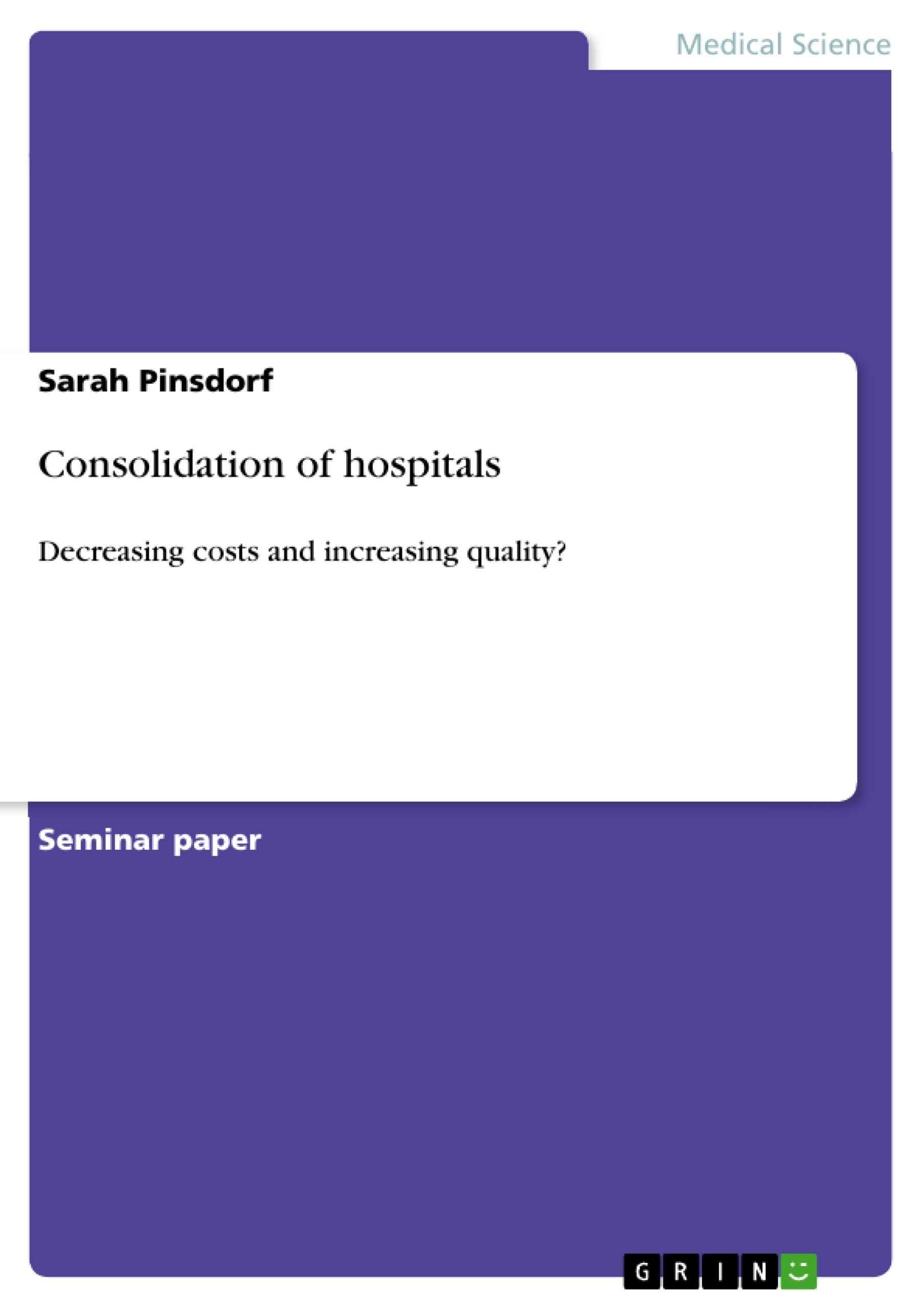Increasing cost pressure, shortage of staff, investment backlog – more and more hospitals need to merge with others to survive. Apart from the decreasing capital investments of the federal states, especially the implementation of DRGs (Monopolkommission 2008, 313) and the possibility of integrated health care lead to an enormous cost pressure.
In Germany, there is a dual hospital funding. The costs of operation are beared by payments of health insurance funds. Investment costs for new buildings or the replacement of capital goods are payed by the federal states. However, these allowances of investment are on the decrease for years, which leads to investment backlogs in hospital (Augurzky et al. 2009, 93). This implies that hospitals are supposed to invest, but their funds are too small to do so. In the long run, the economic efficiency suffers because it cannot compete with other hospitals regarding the technological progress (Augurzky et al. 2009, 13). The introduction of DRGs [Diagnosis Related Groups], the basis of calculation for hospitals, lead to an increasing pressure of working economically. In the old system, every day of a patient’s stay in the hospital was refunded based on same-day hospital and nursing charges. In the new system, only occupant days within a predetermined period of hospitalization. The preterm discharge or a discharge exceeding the period of hospitalization results in discounts in payments, which often do not allow cost recovery (Eveslage 2006, 37-39). Accordingly, hospitals are under pressure to treat their patients fast and discharge them within the preset period. This requires efficient and economical operations. An additional burden is the growing competition in the sector of ambulatory care. As a result of the strong medical progress, more and more operations, which were formerly bound to be performed in hospital, can nowadays be done ambulant. Another innovation in the German health care system are medical service centers [Medizinische Versorgungszentren]. They will soon be capable to take over the primary health care in rural areas and replace major hospitals there, because they are able to work more economic (Augurzky et al. 2009, 162). On the whole, the pressure on hospitals increased steadily in the past years. Many hospitals are not capable to assert themselves on the market under today’s conditions solitary. 12 per cent of the economically weak hospitals are expected to shut down by 2020. (Augurzky et al. 2009, 124).
Inhaltsverzeichnis (Table of Contents)
- Chapter 1 Introduction
- Chapter 2 Consolidation in general
- Chapter 3 Advantages of Consolidation of Hospitals
- Chapter 4 Disadvantages of Consolidation of Hospitals
- Chapter 5 Conclusion
Zielsetzung und Themenschwerpunkte (Objectives and Key Themes)
This paper examines the consolidation of hospitals in Germany, specifically focusing on the potential benefits and drawbacks of this approach in terms of cost reduction and quality improvement. The analysis considers the increasing pressure on hospitals due to rising costs, staff shortages, and investment backlogs.
- The pressures on hospitals in Germany to consolidate due to financial and competitive pressures.
- The various types of consolidation models and their implications for healthcare delivery.
- The potential advantages of consolidation for cost savings and quality improvement.
- The potential disadvantages of consolidation, including the risk of job losses and decreased patient choice.
- The overall impact of consolidation on the German healthcare system.
Zusammenfassung der Kapitel (Chapter Summaries)
Chapter 1 provides an introduction to the growing pressure on hospitals in Germany to consolidate due to increasing costs, staff shortages, and investment backlogs. The chapter explores the impact of factors like DRGs and the introduction of medical service centers on hospital economics.
Chapter 2 defines consolidation and explores its various stages, including the identification of consolidation partners, the development of a framework, and the implementation of the merger. The chapter delves into different types of consolidation models, including horizontal, vertical, and conglomerate consolidation.
Chapter 3 delves into the potential advantages of hospital consolidation, discussing the potential for cost savings through shared resources and economies of scale, as well as the opportunity for quality improvement through enhanced expertise and better access to advanced technology.
Schlüsselwörter (Keywords)
The main keywords and focus topics of this text are: hospital consolidation, cost pressure, quality improvement, DRGs, medical service centers, horizontal consolidation, vertical consolidation, conglomerate consolidation, economies of scale, shared resources, patient choice, job losses, and the German healthcare system.
- Quote paper
- Sarah Pinsdorf (Author), 2011, Consolidation of hospitals, Munich, GRIN Verlag, https://www.grin.com/document/270276



